Helen Reddy (1941–2020), singer/songwriter, is best known for her anthem for women's liberation, 'I am Woman', inspired by Australian feminist and rock journalist Lillian Roxon. Born in Melbourne, Reddy began performing on stage with her parents at the age of four. After winning a talent contest on the television show Bandstand she moved to the USA in 1966. Twenty-seven music labels rejected her before she signed with Capitol Records in 1970, but over the course of the decade she was to achieve fourteen US Top 40 singles including three number ones. When she won a Grammy for 'I am Woman' in 1973, she famously thanked God: 'Because She makes everything possible.' With more gold records at the time than any other female artist except Barbra Streisand, at the height of her fame Reddy headlined to sell-out crowds in Las Vegas, and was honoured with a star on the Hollywood Walk of Fame. Reddy performed 'I am Woman' for the last time at the 2017 Women's March in LA in front of 750,000 people.
Photographer Rennie Ellis visited Reddy at home in California and found her 'friendly and unpretentious and proudly Australian'. She told Ellis: 'When I was in my early 20s I thought I could change the world – now I realise what a mammoth job it is just to change me.'
Purchased 2006
© Rennie Ellis Photographic Archive
www.RennieEllis.com.au
The portrait is of singer songwriter Helen Reddy, famous for the hit I am Woman in 1971. It is a colour photograph on paper measuring approximately 44 centimetres high by 29 centimetres wide. It is surrounded by a wide white border and slender wooden frame. The portrait was taken by Rennie Ellis in 1978.
Helen sits leaning slightly forward in an outdoor setting. She is positioned face on in the centre of the image. She is cropped on either side at the shoulders and beneath at mid chest.
In the top half of the portrait behind Helen’s face the background is almost entirely black. On the left the black is interrupted by an almost vertical blurred streak of bluish white, indicating an architectural element. Immediately above Helen’s head and to the right, light shines off unfocused bright green leaves; the foliage spilling down into the photograph.
The lower part of the image contains glimpses of a white surface on the left, and on the right, the white wrought-iron grid-patterned and metal back rest of a modern outdoor chair.
Helen’s short chestnut red-brown hair is tinted golden-caramel on top where the light touches it. From a side part on the left, the front of her hair curls over then up off her forehead in neat waves. The hair at the sides sweeps back and covers the top of her ears, the lobes are pierced; each has a small gold ring.
Helen has a heart shaped face. Her skin is smooth and lightly tanned with a dewy pink sheen. Her eyebrows are dark and plucked into fine sharp arches. Helen’s deep-hazel eyes look directly at us. A dusting of dark eyeshadow is visible on her upper lids and her lashes are lightly covered with mascara. She has high cheekbones, and her nose is straight with a narrow bridge and downturned tip. Faint lines run from the edges of her nostrils to the corners of her closed smiling lips. Beneath her lower lip Helen has a faint horizontal indent. Her defined angular jaw leads to a rounded chin.
Her bright white button-through shirt with notched collar and wide wings is open at the throat and meets in a deep ‘v’ at the breastbone.
Audio description written by Krysia Kitch and voiced by Amy Middleby



On one level The Companion talks about the most famous and frontline Australians, but on another it tells us about ourselves.
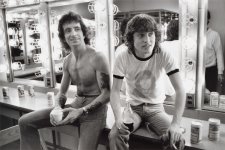
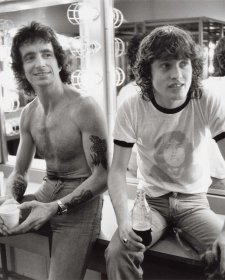
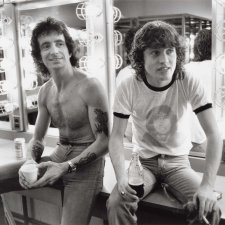
Bon Scott and Angus Young photographed by Rennie Ellis are part of a display celebrating summer and images of the shirtless male.

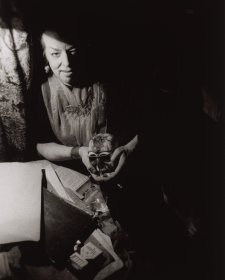
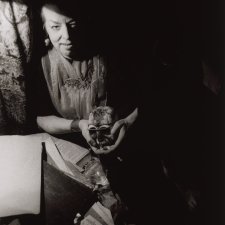
Rennie Ellis photographs the self-proclaimed 'Witch of Kings Cross'.